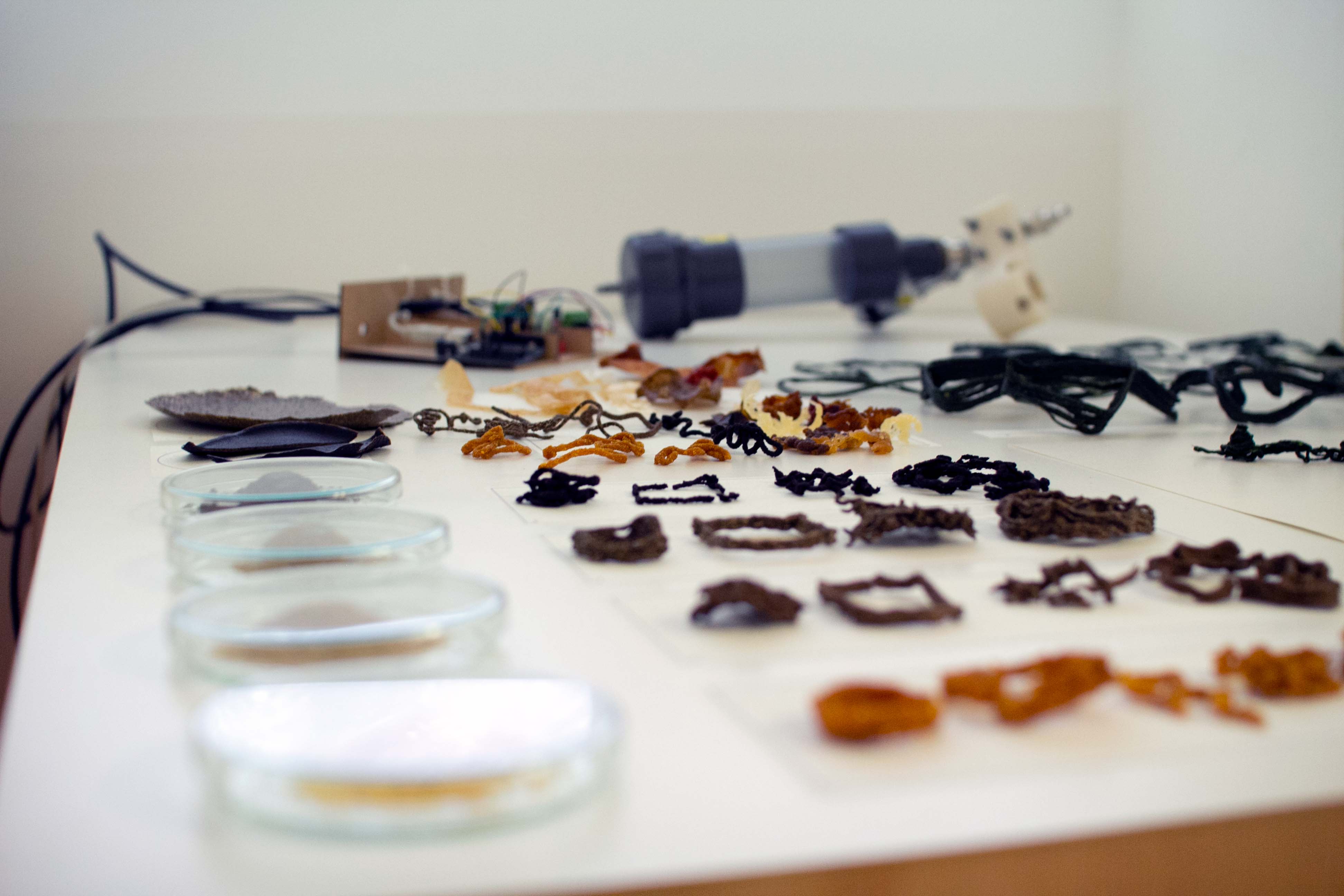Shifted Agency

As the robotic fabrication becomes more and more important for the creative as well as the industrial sector new forms of collaboration and exchange between the different actors are necessary. This project deals with the triangle of robot, material and human and questions the predominant hierarchical human-robot relationship. The approach is to play with the ability of act and exhaust the surrender of control. What will happen if the control is shifted to the robot and material? An interactive feedback loop was created to address this question. With the help of an extruder on a Universal robot, self-manufactured bioplastics are printed. The design is not based on a previously generated geometry but is created interactively by a set of rules. The set of rules is feeded by collected data such as the moisture content of the printed material. This means that the robot is no longer controlled by humans but by the material.

Material studies are an essential part of the project in order to produce a material that is capable of being printed. In material science, more and more research is being done into sustainable biodegradable alternatives. However, these materials are often difficult to handle and process with robots due to their lack of homogeneity and unpredictability in an industrial context. In this project, bioplastics were specifically researched and selected as the material to be used in order to play with and exploit their unpredictability. Bioplastics are a very versatile example, as they are having different properties depending on the additives, and can therefore meet special requirements.
As the more and more computer controlled fabrication, the gap between the design, material performance and fabrication techniques is growing. As the tool path is scripted before, an interactive behavior on material performances in real time is quite rare. The goal of this project is to create an interactive feedback loop that respond in real time to performance parameters. Trough the cybernetic loop the design is not based on geometry anymore but on dynamic rules. There are no limits to the feedback loop and choice of parameters which offers a great potential for upcoming experiments. With the further development of the system and the adaptation to different production conditions, the following questions will be investigated in the future: Who are the design agents? Can the individual material properties be better integrated into the design and manufacturing process? Is it possible to overcome the division between design and manufacturing technology?
Contact